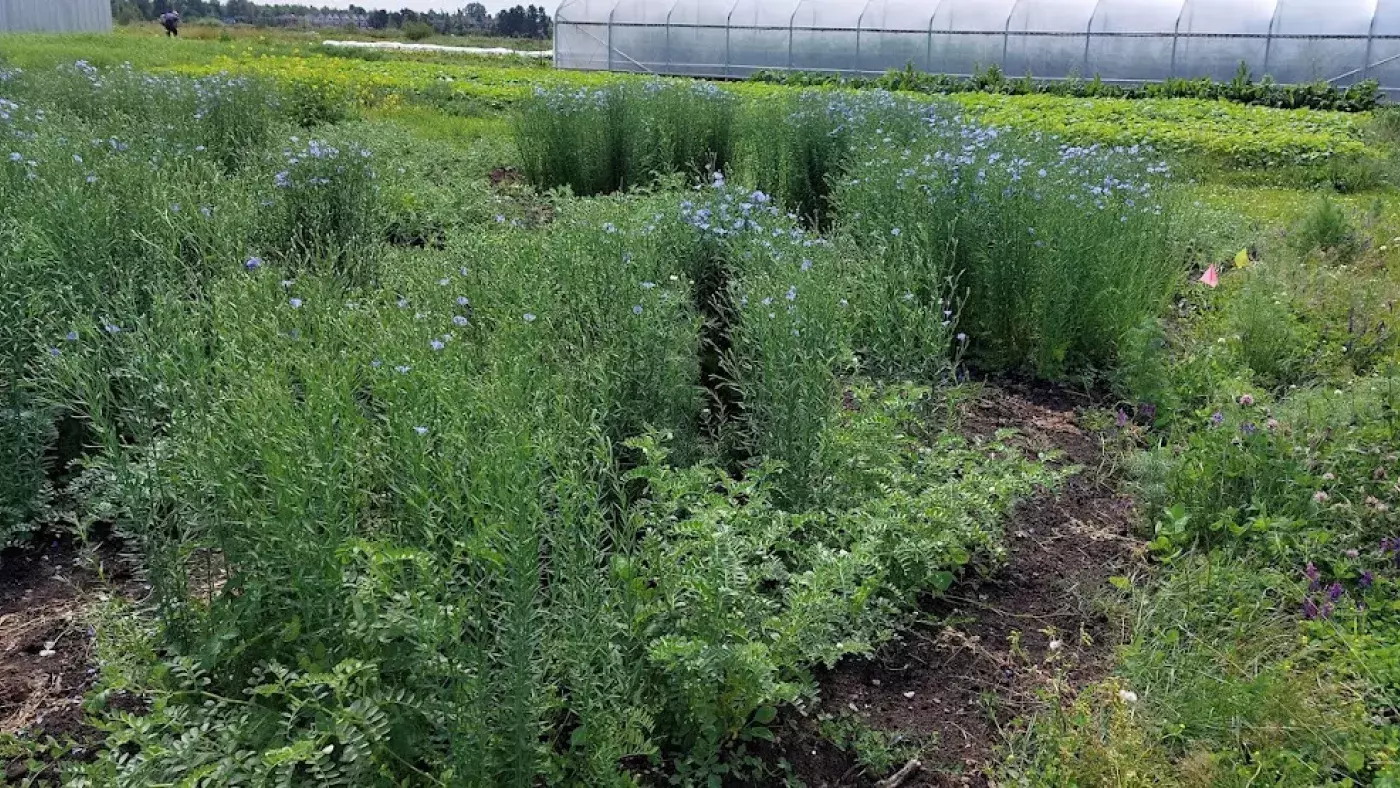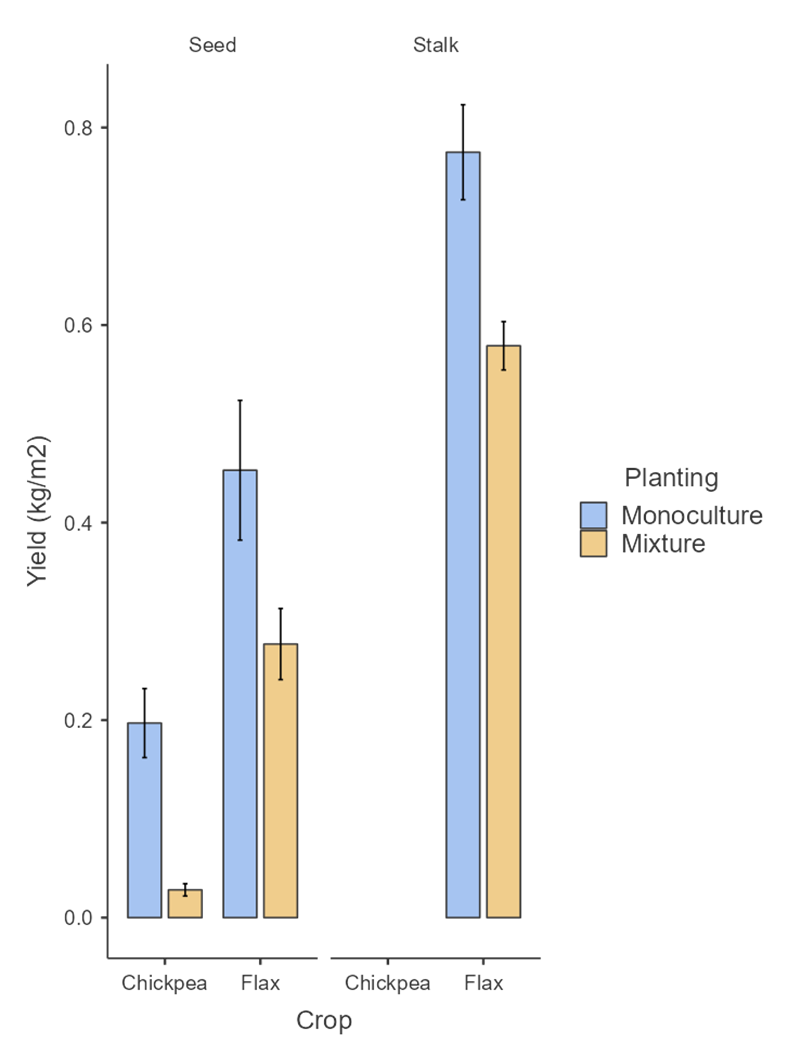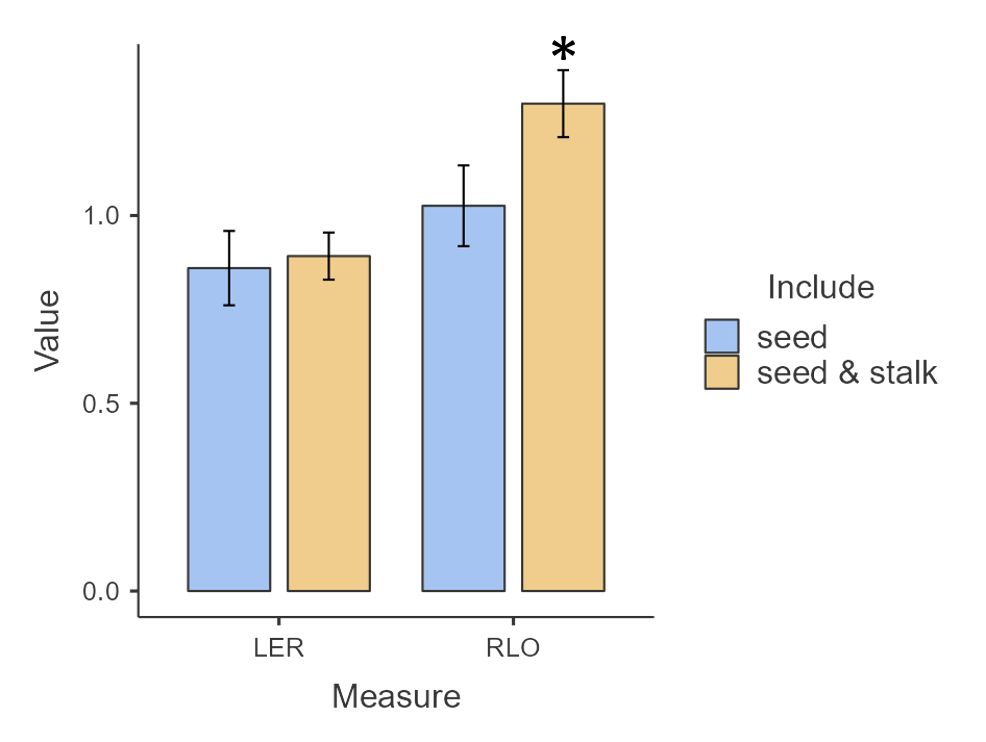

Dual purpose flax and chickpea had greater land output in mixed plantings than in monocultures. Flax dominated mixtures.
Sustainable Agriculture Student Research Project
Yield Effect of Flax (Linum usitatissimum) and Chickpea (Cicer arietinum) intercroppingMoira Tarry, Department of Sustainable Agriculture and Food Systems, 2022 |
Introduction
- There is increasing demand for sustainably produced textiles as consumers grow more aware of the effects of clothing production on the environment.
- There is a niche opportunity for British Columbian farmers to grow dual purpose flax for seed production and for linen production (textiles).
- Chickpea can be grown as a companion for flax, fixing nitrogen in the soil and producing a nutritious food crop.
Objectives
- Compare flax and chickpea mixtures to their respective monocultures
- Determine yield of flax seed, flax stalk, and chickpea seed in each system
- Assess practicality of flax and chickpea intercropping systems
Methods
- Location: KPU Farm at the Garden City Lands, Richmond B.C.
- Expermental Design: Randomized Complete Block Design with five replicates and three treatments:
- Chickpea monoculture (40 seeds/m2, West Coast Seeds)
- Flax monoculture (400 seeds/m2, West Coast Seeds)
- Chickpea and flax mixture (20 and 200 seeds/m2, respectively)
- Plot Size: 1 x 2 m
- Planting Date: May 6th, 2022
- Harvest Dates: August 5th and 15th, 2022 (flax and chickpea, respectively)
- Dependent Variables:
- Weight of dried chickpea seeds
- Weight of dried flax seeds
- Weight of dried flax stalks
- Intercrop Compared to Monocultures
- Land Equivalence Ratio
- Relative Land Output
- Land Equivalence Ratio
Results
Image

Figure 1. Yield of chickpea seed, and flax seed and stalk, in mixtures and monocultures. Error bars denote standard error of the mean (n = 5).
Image

Figure 2. Land Equivalence Ratio (LER) and Relative Land Output (RLO) for mixed plantings of flax and chickpea. Blue bars show values for seed only. Yellow bars show values when flax stalk is also included as an output. Error bars denote standard error of each mean (n = 5). * denotes value different from 1 (p < 0.05).
Discussion
- Flax dominated mixtures, outcompeting chickpea.
- Flax mixtures yielded highly in both seed and stalk compared to their respective monocultures. Chickpea yielded poorly.
- Mixing chickpea and flax improved flax yield but reduced chickpea yield too vastly to be considered a practical intercropping system.